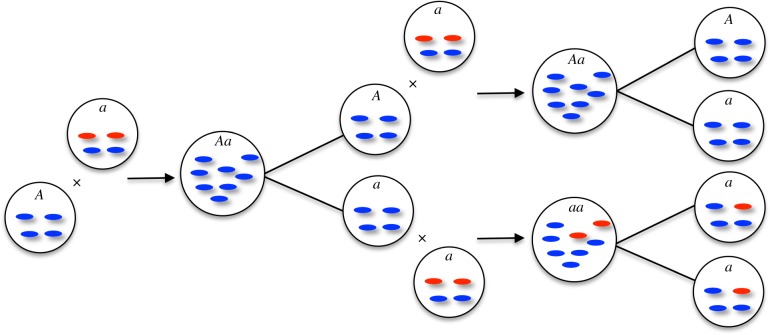Figure 2.
Schematic representation of leakage of UPI benefits to the BPI part of the population. Small circles are gametes, big circles are zygotes. Ovals are mitochondria, blue being wild-type and red mutants. Reading from left to right, when the UPI gene A is at low frequency, it becomes associated with fit mitochondria and so A gametes are highly likely to carry no mutants (all blue). When a less fit a gamete fuses with a fit A gamete (first fusion), they produce a mutant-free zygote. In turn, this produces mutant-free A and a gametes, that are likely to fuse with other unimproved a gametes as these are common in the population (second fusion). Even though the resulting a × a zygotes have BPI, they have lower mutational load than typical a×a fusions, and produce fitter a gametes because of the leakage of improved mitotypes from A gametes in Aa individuals. Further leakage over many generations leads to the cumulative improvement of mitotypes in the a population.

